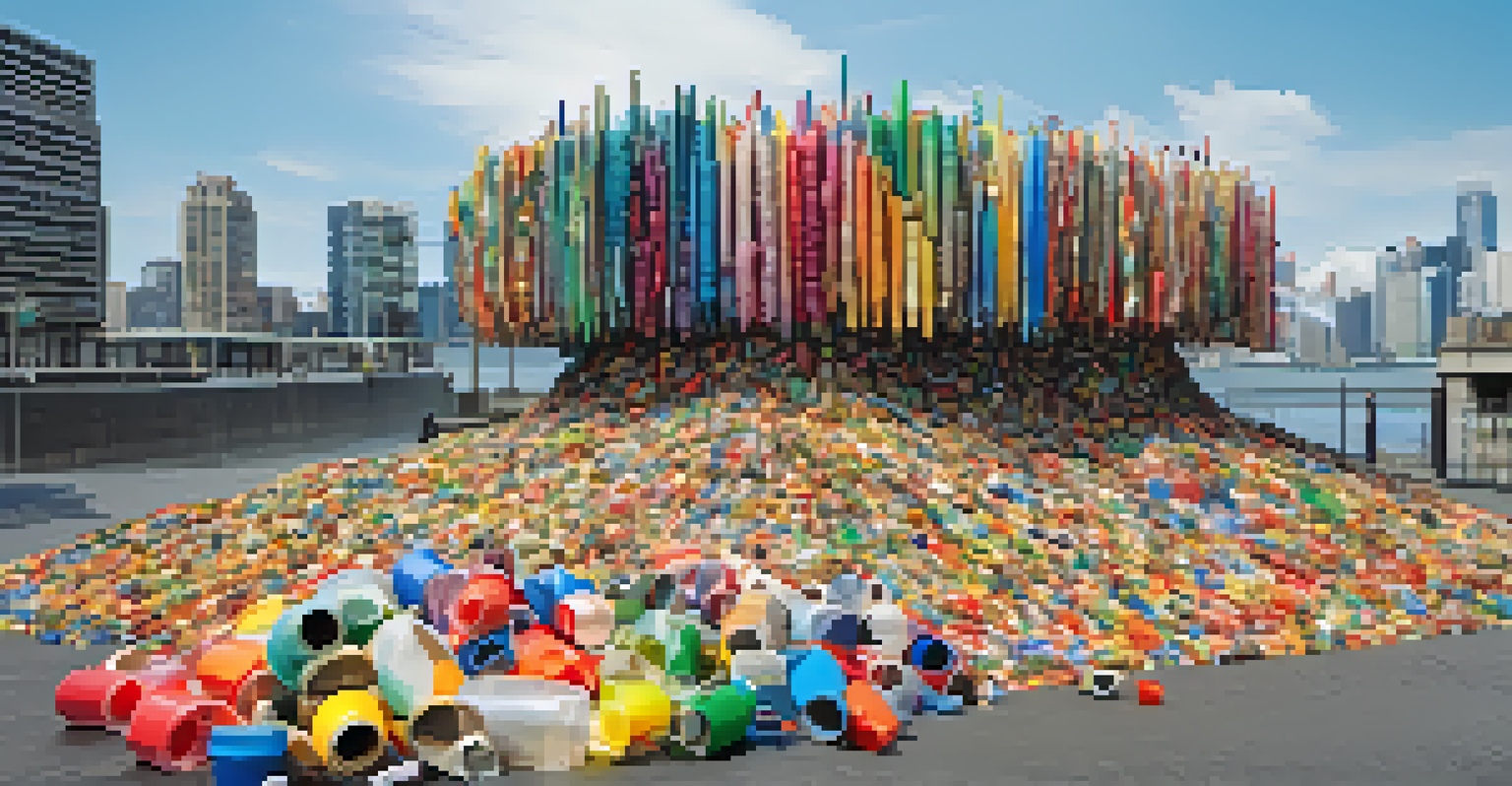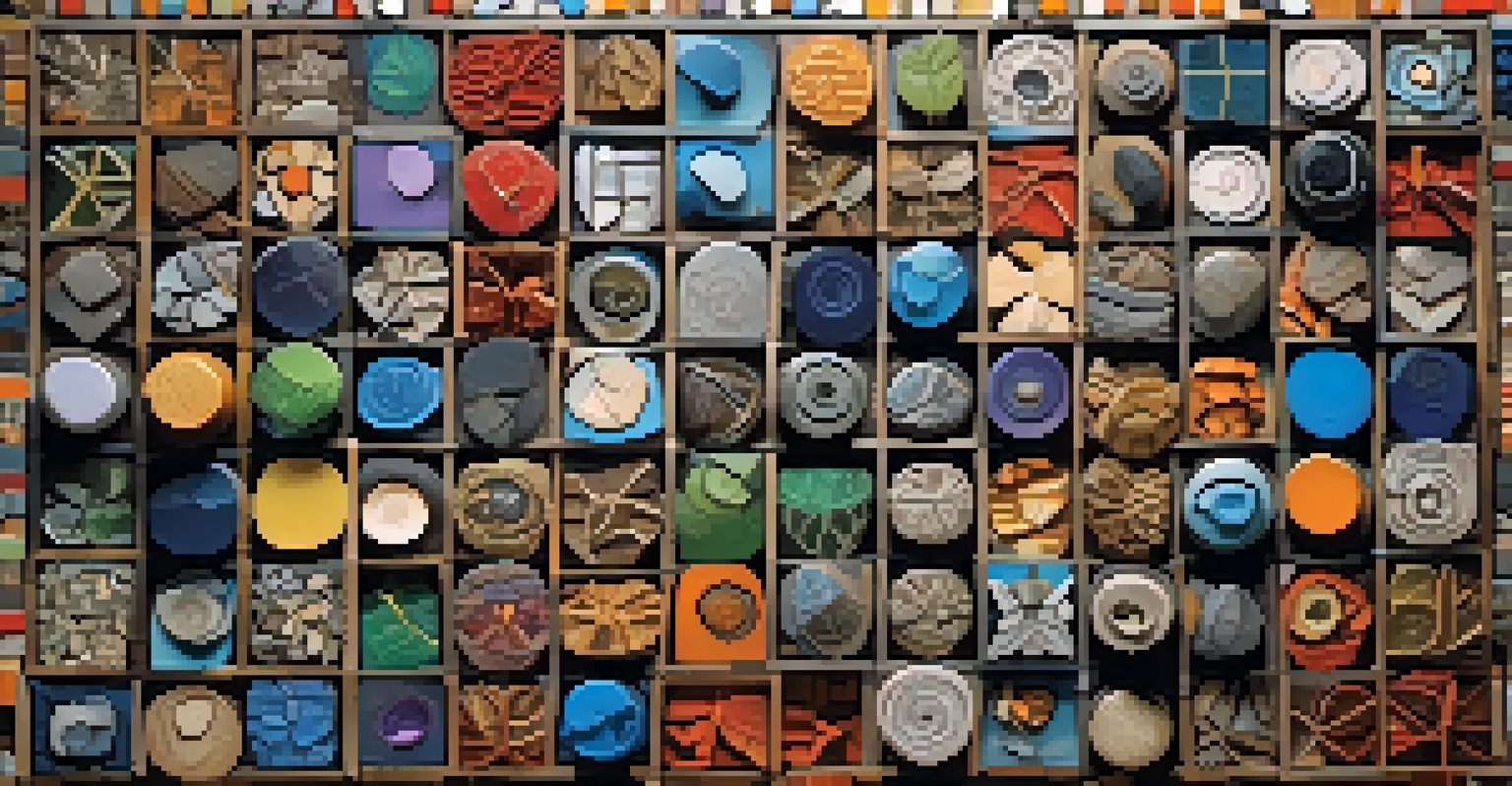The Aesthetic of Eco-Art: Beauty in Environmental Awareness

Understanding Eco-Art and Its Core Principles
Eco-art, at its essence, combines artistic expression with environmental activism. It seeks to raise awareness about ecological issues while inviting viewers to appreciate the beauty of nature. Artists use various mediums, from sculpture to installations, to convey their messages, often incorporating natural elements directly into their work.
Art is a way of organizing the world, and it can be a way of understanding the world. It can create awareness and make us think about the environment in a different way.
This artistic movement thrives on the idea that beauty can inspire change. By creating visually stunning pieces that address environmental concerns, artists engage audiences in a dialogue about sustainability. Through eco-art, viewers are not just passive observers; they become active participants in contemplating their relationship with the environment.
Moreover, eco-art often emphasizes the fragility of our ecosystems. Artists highlight the consequences of human actions on nature, serving as a reminder that our choices matter. This poignant blend of beauty and message makes eco-art a powerful tool for environmental awareness.
The Role of Nature in Eco-Art Creations
Nature plays a pivotal role in eco-art, often serving as both inspiration and medium. Artists frequently utilize organic materials like wood, soil, and plants, which not only reflect their themes but also showcase nature's inherent beauty. This connection to the natural world reinforces the idea that art can emerge from, and contribute to, environmental health.

For example, consider the work of artist Andy Goldsworthy, who creates intricate sculptures using leaves, stones, and ice. His ephemeral pieces highlight the transience of nature, reminding us of the ever-changing world around us. Through such works, viewers are invited to appreciate the delicate balance of ecosystems.
Eco-Art Blends Art and Activism
Eco-art combines artistic expression with environmental activism to raise awareness about ecological issues.
Additionally, incorporating natural elements into art can foster a deeper connection to the environment. When people see beauty crafted from the earth itself, they may feel a greater responsibility to protect it. This relationship between art and nature is essential in cultivating a culture of environmental stewardship.
Notable Eco-Art Projects Across the Globe
Around the world, various eco-art projects have captured the imagination and sparked conversations about environmental issues. One notable example is the 'Trash Isles' project, which aimed to raise awareness about ocean pollution. Artists and activists collaborated to create an island made entirely of ocean plastic, drawing attention to the plastic crisis in our oceans.
The artist must create a spark before he can make a fire, and before art can be born, the spirit must be present in the work.
Another inspiring project is the 'High Line' in New York City, where an abandoned railway was transformed into a green space filled with native plants and art installations. This urban eco-art project not only beautified the area but also provided a habitat for local wildlife, demonstrating the potential of eco-art to revitalize urban environments.
These projects illustrate the diverse ways eco-art can engage communities and promote environmental awareness. By blending artistic vision with ecological themes, they create spaces that invite reflection and action.
The Impact of Eco-Art on Environmental Awareness
Eco-art plays a crucial role in shaping public perception of environmental issues. By presenting complex topics in an accessible and visually appealing manner, artists can reach a wider audience. This can lead to increased awareness and motivation to take action against environmental degradation.
For instance, installations like Olafur Eliasson's 'Ice Watch' seek to make the effects of climate change tangible. By displaying massive blocks of melting ice in urban settings, viewers are confronted with the reality of global warming in a visceral way. Such experiences can inspire individuals to advocate for change.
Nature as Art's Core Medium
Artists frequently use organic materials to reflect nature's beauty and highlight the importance of environmental health.
Moreover, eco-art encourages dialogue about sustainability and conservation. When viewers engage with these pieces, they often share their thoughts and feelings, creating a ripple effect of awareness. This community engagement is vital for fostering a collective responsibility towards our planet.
Eco-Art as a Medium of Activism
Eco-art is not just about aesthetics; it often serves as a form of activism. Artists use their platforms to challenge societal norms and provoke thought on environmental issues. This can take many forms, from provocative installations to community-based projects aimed at empowering local populations.
For example, the 'Earth Day' installations created by various artists serve as a reminder of the urgent need for climate action. These temporary works often encourage viewers to reflect on their own environmental impact and consider ways to make changes in their lives. By blending art with activism, these projects create a sense of urgency and agency.
Additionally, eco-art can mobilize communities around environmental causes. By engaging people through creative expression, artists can inspire collective action towards sustainability. This intersection of art and activism highlights the potential for creative solutions to environmental challenges.
Sustainability in the Creation of Eco-Art
Sustainability is a core principle in the creation of eco-art. Artists often prioritize using reclaimed or natural materials to minimize their environmental footprint. This commitment to sustainability not only enhances their message but also sets an example for others in the art community.
For instance, many eco-artists utilize recycled materials to create their works, turning waste into something beautiful. This practice not only reduces waste but also challenges the notion of what art can be. By transforming discarded items into art, they invite viewers to rethink their consumption habits.
Sustainability Shapes Eco-Art
Sustainability is central to eco-art, with artists prioritizing reclaimed materials and eco-friendly practices in their creations.
Moreover, sustainable practices in eco-art extend beyond materials. Many artists advocate for environmentally friendly production methods, such as using non-toxic paints or sustainable energy sources. This holistic approach reinforces the connection between art and environmental responsibility.
The Future of Eco-Art and Its Potential
As we move further into the 21st century, the potential for eco-art to influence environmental awareness is more significant than ever. With pressing issues like climate change and biodiversity loss, artists have the opportunity to inspire action through their work. Eco-art can serve as a catalyst for change, encouraging individuals to engage with and advocate for the environment.
The rise of technology also opens up new avenues for eco-art. Virtual reality, interactive installations, and social media can amplify the reach and impact of eco-art projects. Artists can create immersive experiences that allow viewers to explore environmental themes in innovative ways.

Ultimately, the future of eco-art lies in its ability to connect people with nature and inspire action. As artists continue to push boundaries and explore new mediums, the aesthetic of eco-art will evolve, but its core message of environmental awareness will remain steadfast.